torus fracture




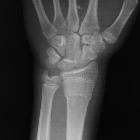





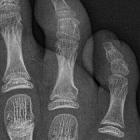

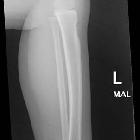
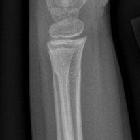


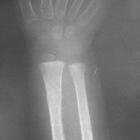
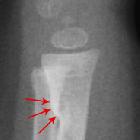


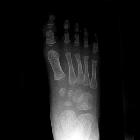




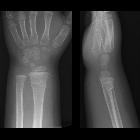
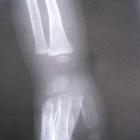


 nicht verwechseln mit: Grünholzfraktur
nicht verwechseln mit: GrünholzfrakturTorus fractures, also known as buckle fractures, are incomplete fractures of the shaft of a long bone that is characterized by bulging of the cortex. They result from trabecular compression due to an axial loading force along the long axis of the bone. They are usually seen in children, frequently involving the distal radial metaphysis.
Terminology
Strictly speaking, a torus fracture refers to a circumferential buckle fracture . However, the terms are often used interchangeably.
Epidemiology
These type of fractures are more common in children, especially aged 5-10 years, due to the elasticity of their bones. In adults, the commonest form of buckle fracture seen is a buckle fracture of the ribs.
Pathology
Cortical buckle fractures occur when there is axial loading of a long bone. This most commonly occurs at the distal radius or tibia following a fall on an outstretched arm; the force is transmitted from carpus to the distal radius and the point of least resistance fractures, usually the dorsal cortex of the distal radius.
Radiographic features
Plain radiograph
- distinct fracture lines are not seen
- subtle deformity or buckle of the cortex may be evident
- in some cases, angulation is the only diagnostic clue
Treatment and prognosis
They are self-limiting and typically do not require operative intervention, although a manipulation may be required if the angulation is severe. Sometimes a cast may be applied, but often a splint is all that is required with a period of rest and immobilization.
History and etymology
The term torus is the Latin word meaning protuberance. A torus is the convex portion of the upper part of the base of a Greek column and resembles the appearance of the cortical buckling seen in the "column" of bone which has been fractured in the pattern discussed in this article.
Practical points
- in children ≥7 years, a distance of <1 cm between the fracture and physis means a potentially unstable distal radius fracture is more likely than a buckle fracture
Siehe auch:
und weiter:

 Assoziationen und Differentialdiagnosen zu Wulstfraktur:
Assoziationen und Differentialdiagnosen zu Wulstfraktur:

